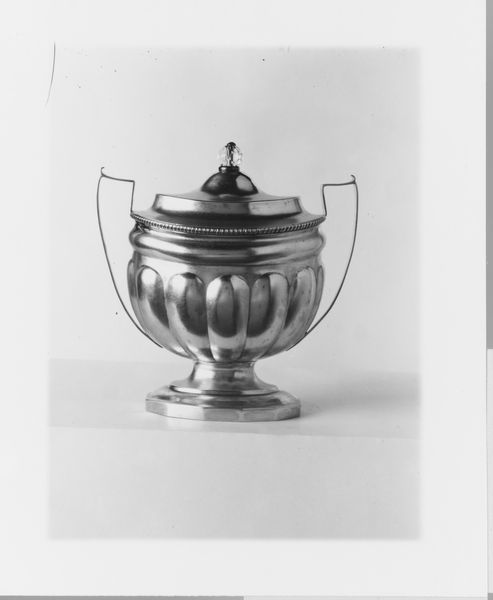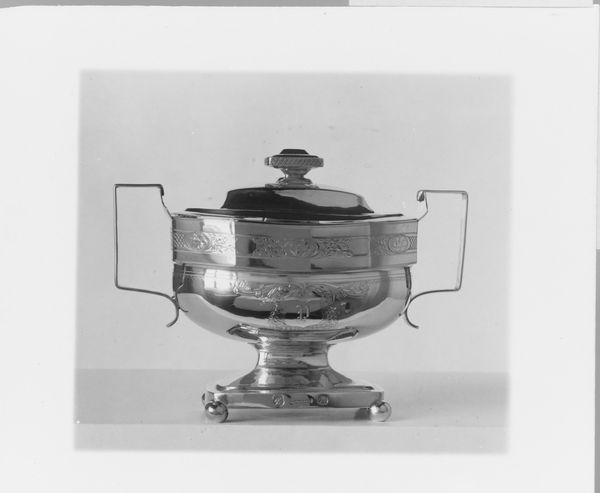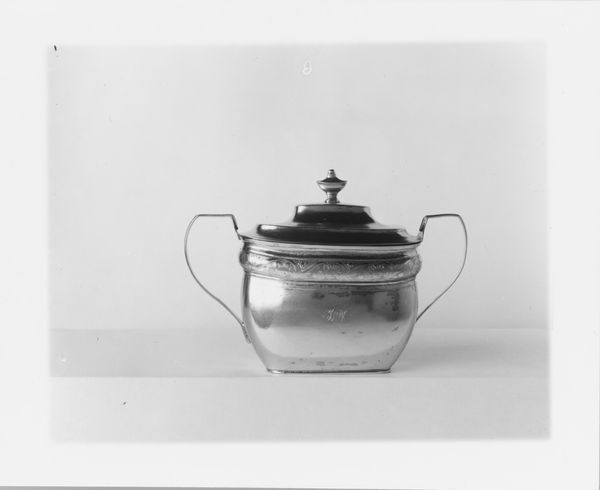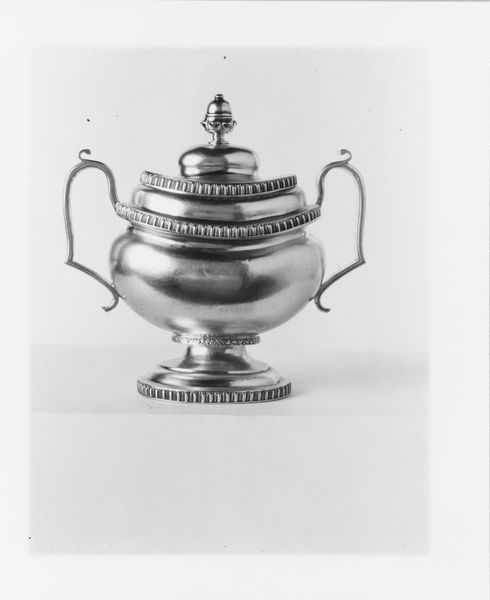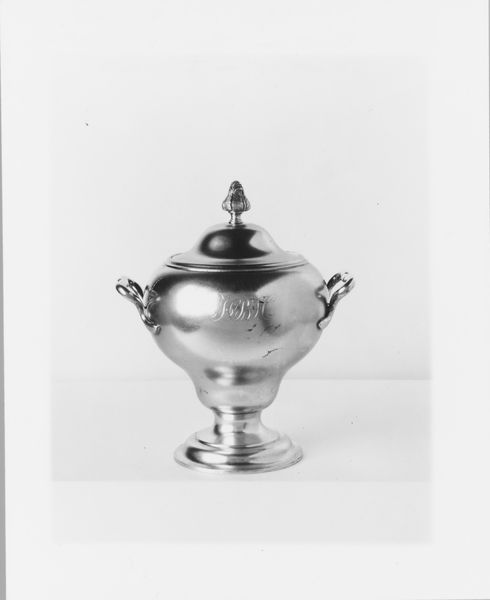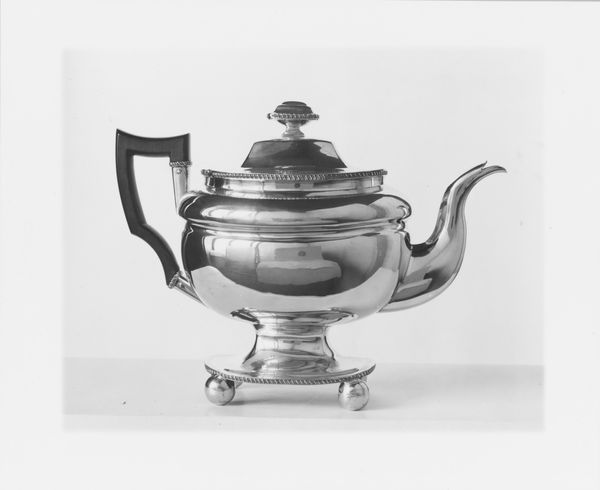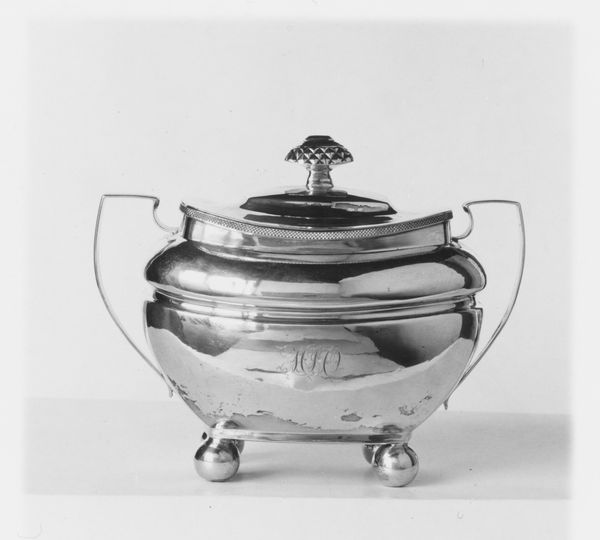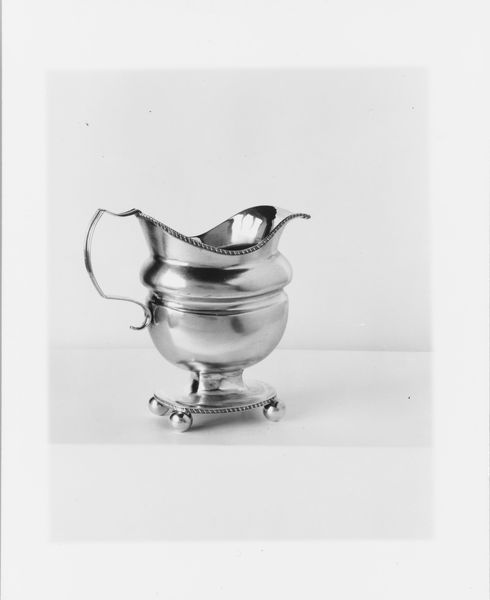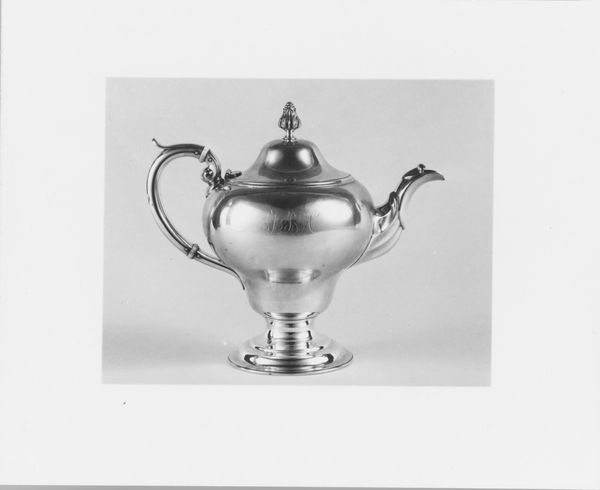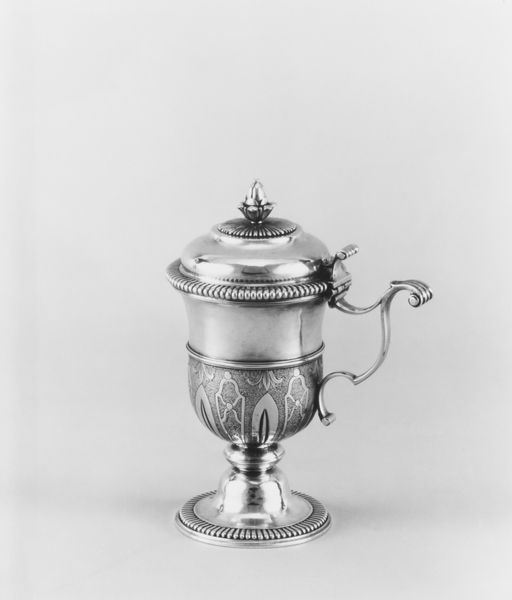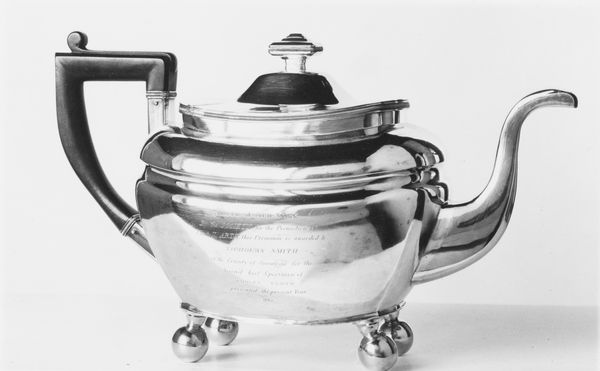
silver, metal
#
neoclacissism
#
still-life-photography
#
silver
#
metal
#
black and white theme
#
black and white
#
united-states
Dimensions: Overall: 7 3/4 x 8 3/8 x 5 1/8 in. (19.7 x 21.3 x 13 cm); 15 oz. 10 dwt. (482 g) Body: H. 6 3/16 in. (15.7 cm); 12 oz. 3 dwt. (377.9 g) Cover: 2 1/8 x 4 9/16 x 3 15/16 in. (5.4 x 11.6 x 10 cm); 3 oz. 7 dwt. (104.1 g)
Copyright: Public Domain
This sugar bowl was made by William B. Heyer, likely in the early 1800s, from shimmering silver. Think about the making: hammering, shaping, and polishing. This wasn't just a craft, it was a crucial element of society. Silver wasn't simply dug from the earth; it was also extracted from the labor of miners, often under oppressive colonial conditions. Then the silversmith like Heyer entered the picture, transforming this raw material into an item of refined luxury. The bowl's gleaming surface and carefully crafted form were not only visually appealing but also served as a material display of affluence. Owning a sugar bowl like this signaled one's place in the emerging capitalist economy, a world increasingly fueled by commodities like sugar itself – cultivated by enslaved people. So, next time you see a piece of silverware, remember it’s not just about beauty, but also about production, labor, and the intertwined histories of art, craft, and society.
Comments
No comments
Be the first to comment and join the conversation on the ultimate creative platform.
